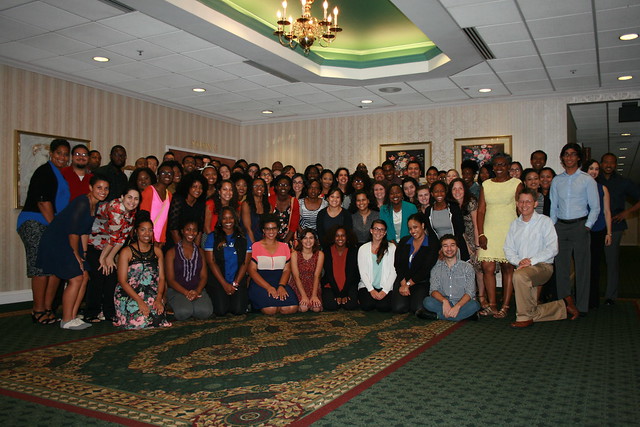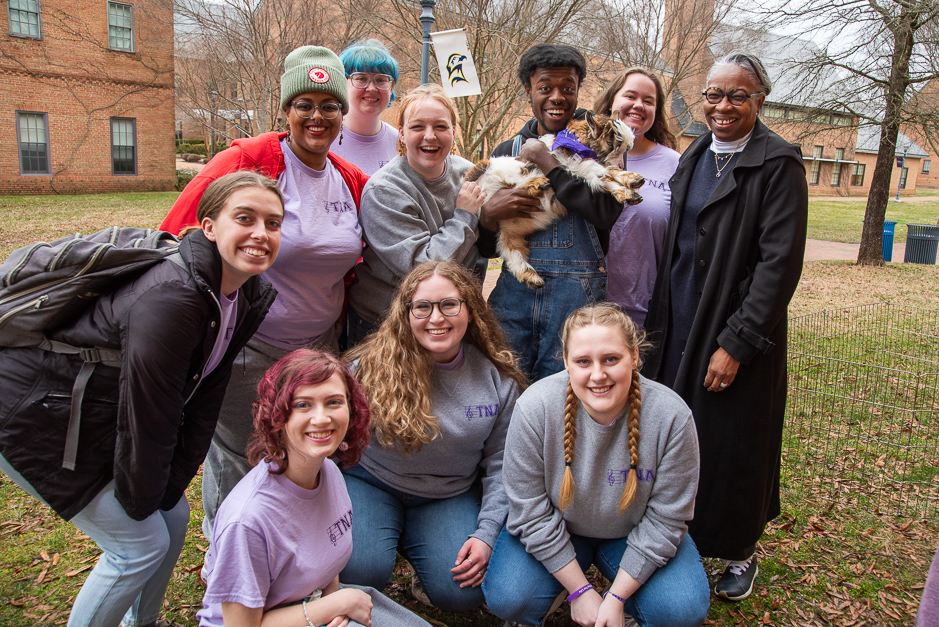Tuajuanda C. Jordan, President
St. Mary’s College of Maryland
Meyerhoff Graduate Fellow Retreat, Shepherdstown, WV
August 5, 2016
Good evening, everyone. I am pleased and honored to be your invited speaker tonight. Mike, Justine, and I have been long-time colleagues. I have always admired the impact of the Meyerhoff program and, given that my daughter was a Meyerhoff Scholar, those responsible for making it the premier program for training diverse scientists and engineers have a very special place in my heart.
It should come as no surprise to you that this evening’s talk will begin with some data. I have no doubt that I will not be telling you anything you do not know. Nonetheless, these data help to emphasize the importance of this program in the national context. Additionally, and equally important, I hope that these data will help you realize that each of you, in your own way, is contributing to a historical point in time for you and your families and, ultimately, our nation.
According to the NSF’s 2016 Science and Engineering (S&E) Indicators report, African Americans, Hispanics, and American Indians/Alaska Natives represented, as a group, 13% of the science and engineering PhD’s in 2013. When these data are compared to the representation of these groups in the general population, it becomes glaringly apparent that these groups are truly underrepresented in S&E because they represented 26% of the population in 2013 according to the US Census Bureau estimates. This represents a woeful state of affairs. Nonetheless, there is hope.
When one examines the race and ethnicity of students enrolled in doctoral programs in 2013, we see that the numbers of whites and Asians/Pacific Islanders experienced a measurable decline from 2006 to 2013 while the numbers of the largest underrepresented minority groups, namely Hispanics and African Americans, had increases during that same period. So, although we are still woefully underrepresented, we are increasing our numbers in the graduate pipeline.
What is also of interest during the same time period is that though we saw a growth in the total number of US citizen/permanent residents enrolled in S&E graduate programs from 598,000 to 616,00, females lost ground. In 2006, the female to male ratio was roughly 50:50. In 2013, that ratio decreased to 45:55. That loss was primarily attributed to the bottom falling out of female enrollment in computer science, but it is still cause for concern.
It is also worthy of note that being an underrepresented minority is not simply about the color of your skin, your ethnicity, or your sex. It is also about being disabled. In 2013, of enrolled graduate students who identified as being disabled, 20% of them were in the S&E fields. Approximately 90% of these disabled graduate students are at least 24 years of age; 60% are female. This group of individuals is often left out of the conversation. We cannot continue to do that.
And so, it should become apparent to you that we, as a nation, and we as scientists and science educators have a lot more work to do to ensure that there are sufficient numbers of prepared and accomplished men and women of color, women in general, and persons with disabilities who are capable and willing to pursue careers in science and science education. The Meyerhoff Graduate Fellows Program plays a key role in moving us towards this goal.
The positive impact of the Meyerhoff programs is unmistakable. Earning a STEM degree at any level takes more than a notion. Several weeks ago, one of my assistants stated that she was told that earning a terminal degree is likened to a test of endurance. Most people who are accepted into doctoral programs are intelligent; however, the challenge is whether or not they can make it through the demands of the program.
All of you in the audience are here because you are fighting with everything you have to win this test of endurance. You are making the sacrifice to fulfill your dreams and become a history maker – someone who can help diversify the cadre of STEM PhD’s. I have heard about some of your amazing stories.
For instance, Ana Maldonado, a first-year Mexican American student, majored in psychology at Princeton University – where by the way, my son will be attending in the fall to pursue a terminal degree in cultural psychology. Ana is referred to by her mentors as a “mover and a shaker” and a “go-getter.” Ana has not let her life’s challenges get in the way of fulfilling her dreams. Not the fact that she grew up in California at the poverty level. Not the fact that her husband, who is not a US citizen, lives in Costa Rica. Not the fact that she had to fight for funding to be able to participate in the Meyerhoff Scholars program. Instead, she weaves all of her challenges into an amazing story of perseverance, hope, and triumph.
I was also inspired by Ashley Mitchell, a first-generation African American student, majoring in molecular medicine at the University of Baltimore. Ashley, who is known for making statements like, “Girl, I don’t even know how I made it here. This is just a dream to me,” also does not use her challenges as excuses. Not the fact that she grew up in Brooklyn, New York below the poverty level and relocated to Prince George’s County to improve her prospects. Not the fact that she has no home to return to during semester breaks. Not the fact the she suffers from cerebral palsy and learning disabilities. Instead, Ashley rises to the challenge, determined to fulfill a bet waged by her Spanish professor that she would complete graduate school. Through her diverse experiences, Ashley is becoming more comfortable “being Black in White spaces.” I love that quote as it is the reality of the situation and it is not just something you will experience in graduate school.
I applaud Ana, Ashley, and each of you for your tenacity and for giving me the opportunity to be part of your stories. I am also appreciative of your teachers and professors, your mentors, and all of those who have helped you to make it thus far.
Like you, I am a history maker, which, in this day and time is unfortunate that I have had so many “firsts,” but I also consider it a blessing that I have been granted the opportunity to open doors and provide pathways for others. I am:
- First-generation college student
- First African American woman to earn a PhD in Biochemistry from Purdue University
- First African American female chemistry professor at Xavier University
- First African American director of science education at the Howard Hughes Medical Institute where I developed the SEA program, a model program of science education
- First African American Dean of the College of Arts and Sciences at Lewis & Clark College, a selective LAC in the Pacific Northwest, specifically, Portland, OR, known as the whitest city in America
- First African American President of St. Mary’s College of Maryland, an esteemed institution, referred to as the “hidden gem” of the State that boasts a 176-year history.
Is this presidency significant? Yes. Not solely because I am the first president of color at this institution but also because most individuals of color have as their first presidency an institution that is either a minority-serving institution and/or an institution that is relatively non-selective with respect to admissions. St. Mary’s College of Maryland is neither of these things.
SMCM is ranked by US News & World Report as one of the best liberal arts colleges, public or private, in the nation. For public liberal arts colleges, we are ranked #6. Kiplinger ranks us a best buy because we are an exceptional return on investment.
SMCM is a primarily white institution. This is evident at both the student and faculty levels. We are an institution where just 10% of the student body is an underrepresented minority and only 5% of the faculty identifies as underrepresented minority.
SMCM is a liberal arts college where 25% of the graduates are STEM majors. Our students enjoy close relationships with the faculty because our student to faculty ratio is 10:1. This is an exceptional learning environment where students get the attention that they need.
Not only is SMCM a liberal arts college but it is a liberal arts honors college, one of only two in the nation. Being an honors college means that everything we do is done with rigor and there are no remedial courses. Finally, we are a public institution and thus non-sectarian. The name is confusing to many because they assume we are Catholic. Because we are public, access and affordability are key components of our mission. That access and liberal arts are part of our mission provides a great tension and forces us to be creative in delivering an honors-level liberal arts curriculum at an affordable price. We have managed to do this for many years. The SMCM experience results in some of the highest retention and graduation rates in the nation and the highest in the state of Maryland. Usually, one sees that retention and graduation rates of underrepresented minority students is lower than that of the majority students, especially in a rigorous environment. At SMCM, the graduation rate of our underrepresented minority students is about 10 percentage points below the white students at 4 years. At 6- years, the gap has been alleviated and at that point, the underrepresented minority graduation rate is 80% and that of the majority student is 79%.
I have been blessed to lead a college that is one of the best in the nation.
So, the question is what am I doing to enhance the diversity in the pipeline, especially as it relates to the production of underrepresented scientists and engineers?
Mary Church Terrell was a civil rights advocate. She was also the first African American woman to receive a college degree. Terrell wanted the education and advancement of people of color to increase even in a historical time of oppression and injustice. She stressed the concept of “lifting as we climb.” I consider this statement “lifting as we climb” one of my personal mantras. It is not about waiting until you’ve “made it”. What is “making it”? Furthermore, how do you know when you’ve “made it”?
If we are to diversify the STEM fields, as each of us works to reach our goals, we must work to ensure that others have the opportunity for success as well.
Throughout my life, I have focused a good deal of my efforts on issues of inclusion, diversity, and equity. As a college president, my responsibility to do so is even greater and my sphere of influence is broader. In all that I do, I try to lead by example and walk the walk.
- Locally
- College – communications, work groups, strategic plan, hiring policies, recruiting practices, scholarships and internships. These activities make our community more welcoming and more vibrant.
- Community – panels, lectures, and discussions
- Nationally
- Presentations
- Writings – OpEds such as Huffington Post about the responsibility of liberal arts colleges in the national dialog about diversity and inclusion
- Programming – SEA
- Mentoring women across the country at virtually every level
- Policy advising for the NSF and NIGMS
You have a responsibility in all of this as well.
My question to you is, what can you do to ensure that you continue to climb? We know that everyone can be an advocate but the more successful you are in progressing towards your goal, the greater your impact.
I am going to provide you some tips on Keys to Success that I am certain you know but I believe it is important to reiterate.
Maintain a strong and diverse support system. On the slide, I list several. Family is always the most important to me as they provide the foundation upon which I depend for everything. Your Meyerhoff community is part of your extended family and one of the strongest I’ve ever encountered. I do want to touch on the importance of the “intellectual” groups, especially that which I call the “informal” ones. These groups are critical for helping you understand the politics of the environment and keeping you informed of so many systemic things. I implore you to never turn down an opportunity to be engaged in these groups.
Earning your degree will take a lot of effort, but you cannot work all the time. You have to balance life and living, and this requires that you manage your time well.
Stay the course. Remember this journey is an endurance test. There are no short cuts. You must be patient, persistent, and persevere. As Aristotle is credited with saying, “Patience is bitter, but its fruit is sweet.” And you all know that fruit that is ripe, and sweet lasts only a little while. When you are doing your experiments, there will be long periods where things just are not working as you expect them to. That is when persistence and perseverance will pay off because one day you will get THE result that will provide the light to the end of the tunnel. Trust me. It happens to all of us.
When the going gets rough, remember that you have a unique, competitive advantage. You have been accepted into one of the best graduate training programs in the country, a program with knowledgeable and supportive mentors and advisors. You come from a diverse background that affords you the advantage of being able to see the world a bit differently. This is one of your competitive advantages.
I recently read an article in Inside Higher Education about the changing face of a successful business model at colleges and universities. One of the article’s contributors noted that institutions of higher education “need to focus on enrolling a new type of student if they hope to grow in the future” including growing demographics like first-generation college students, students of color, lower-income students, and immigrants. Otherwise, the colleges and universities will face a certain decline. None of us wants that to happen. However, the individuals they describe that are essential contributors to the long-term viability of higher education are people like you and me. That is cause for hope.
However, it is important for us not to lose sight of our lived experiences. Thus, do not think that because people like you and me are important for the viability and long-term sustainability of institutions that it will be easy for you to enter into the professoriate or the job market and name your price. That is not our history in America.
For you to continue to climb, your credentials must be excellent; your integrity, without reproach; your sensitivity to the issues of humanity unquestioned; your network of mentors, advisors, and colleague expansive. Only with these attributes, a lot of luck, and silent prayers will you have a chance of accomplishing your goals and being successful. Know that the Meyerhoff program will provide you with all of these things – even those silent prayers.
I want to thank you, again, Mike, for inviting me to speak with your scholars and fellows. Thank you, Justine, for all you do to just make things right. Thank you, scholars, for what you’ve done to get here and what you will do in the future. I have no doubt you will be successful – regardless of how you define “success,” and I am certain each of you will lift as you climb. I wish you all the best.



